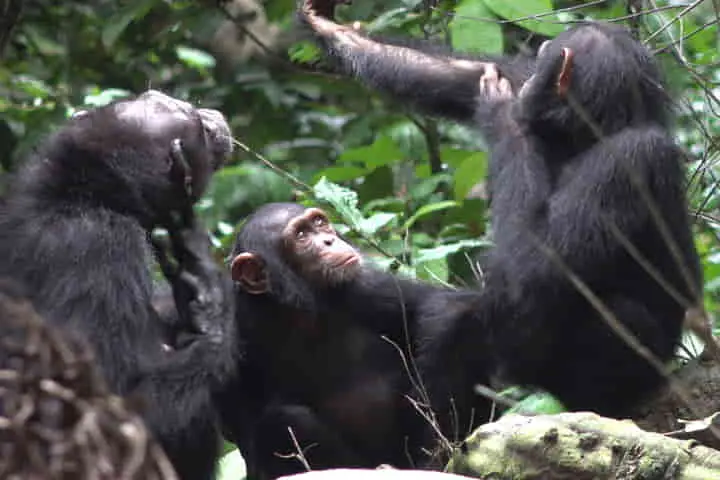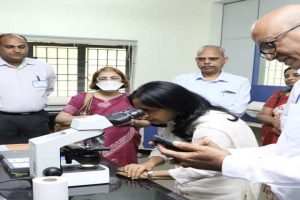Treating oneself is understandable but medicating others is a behaviour rarely expected from non-human beings and this is what was found by scientists in chimpanzees, according to an article in the-scientist.com. The primates were seen catching insects, licking them and putting them on the wound of fellow beings.
While animals like cats and elephants do self-medicate, treating others was new among animals apart from humans.
According to Science Focus it was in 2019, this unusual act was filmed by a volunteer in West Africa’s Loango National Park, who was working at the Ozunga Chimpanzee Project in which a female chimpanzee applied on her son’s injured foot an insect. Following this 22 more such instances were filmed in the next 15 months and the findings of these was published in Current Biology.
Scientists do not know about the insects that the primates are capturing or how does it heal the wound. All that is known is that they are flying, small and dark coloured. It is also suggested that the insects may have properties that make them antiseptic or anti-inflammatory. Another suggestion points out that this behaviour may not be accruing any medicinal benefit at all and may be just part of their culture.
Also read: Leprosy, mankind’s age-old scourge affects chimpanzees too, reveals an international study
As per the Times, the chimps are not eating the insects but just catching them, keeping them between their lips to squeeze them and placing them on the wound.
The author of the study, Simone Pika told the Newsweek that it was “particularly striking” to see the chimps treat not just their injuries but also that of others. This conduct is infrequent among non-human species.
Pika who is a cognitive biologist at the University of Osnabruck in Germany told the Times that cooperation between members of the same species in similar ways is known. “But we don’t know of any other instances in mammals. This may be a learned behaviour that exists only in this group. We don’t know if our chimps are special in this regard.”
Not everyone in the scientific community agrees with the conclusions drawn by the researchers of this study. Anthropologist Aaron Sandel of the University of Texas, Austin, stated that the study is valuable but was doubtful about the explanation that had been given for the behaviour of the chimps. “They don’t offer an alternative explanation for the behaviour, and they make no connection to what insect it might be. The jump to a potential medical function? That’s a stretch at this point.”
Sandel was not involved in the study.
Also read: How Orangutan's can communicate loud and clear despite thick forest cover and distance
It is known that among the animals, social behaviour is typically mutually beneficial. Yet Pika felt that in the present cases that she observed the primate’s action of snatching the insect and putting it on the injury of another chimp doesn’t get anything tangible in return. This she perceived to be an act that helps in increases “the welfare of another being.”
Stating that they continue to know more about chimps, she told the Times: “With every field site we learn more about chimps. They really surprise us.”




















